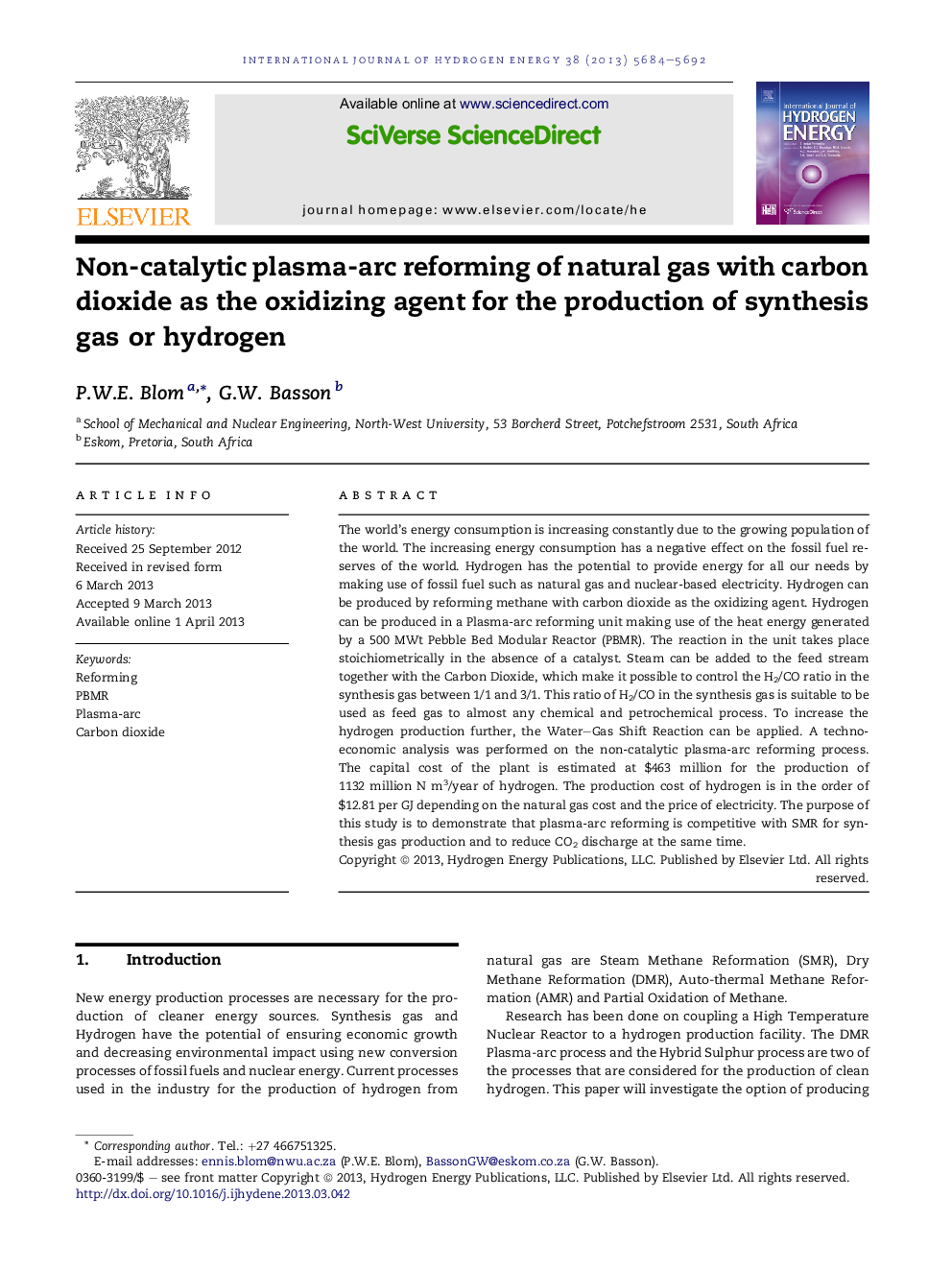| Article ID | Journal | Published Year | Pages | File Type |
|---|---|---|---|---|
| 1281677 | International Journal of Hydrogen Energy | 2013 | 9 Pages |
•Non-catalytic high temperature reforming of natural gas.•Carbon Dioxide as oxidizing agent.•Electricity generated from Nuclear to power plasma-arc units.•Plasma-arc reforming competitive with SMR.•High overall thermal efficiency.
The world's energy consumption is increasing constantly due to the growing population of the world. The increasing energy consumption has a negative effect on the fossil fuel reserves of the world. Hydrogen has the potential to provide energy for all our needs by making use of fossil fuel such as natural gas and nuclear-based electricity. Hydrogen can be produced by reforming methane with carbon dioxide as the oxidizing agent. Hydrogen can be produced in a Plasma-arc reforming unit making use of the heat energy generated by a 500 MWt Pebble Bed Modular Reactor (PBMR). The reaction in the unit takes place stoichiometrically in the absence of a catalyst. Steam can be added to the feed stream together with the Carbon Dioxide, which make it possible to control the H2/CO ratio in the synthesis gas between 1/1 and 3/1. This ratio of H2/CO in the synthesis gas is suitable to be used as feed gas to almost any chemical and petrochemical process. To increase the hydrogen production further, the Water–Gas Shift Reaction can be applied. A techno-economic analysis was performed on the non-catalytic plasma-arc reforming process. The capital cost of the plant is estimated at $463 million for the production of 1132 million N m3/year of hydrogen. The production cost of hydrogen is in the order of $12.81 per GJ depending on the natural gas cost and the price of electricity. The purpose of this study is to demonstrate that plasma-arc reforming is competitive with SMR for synthesis gas production and to reduce CO2 discharge at the same time.
